 Jennifer Krasinski
Jennifer Krasinski
Resistance, performance, and self-determination are at the forefront of a dazzling display of works by over three dozen
Native artists and collectives.
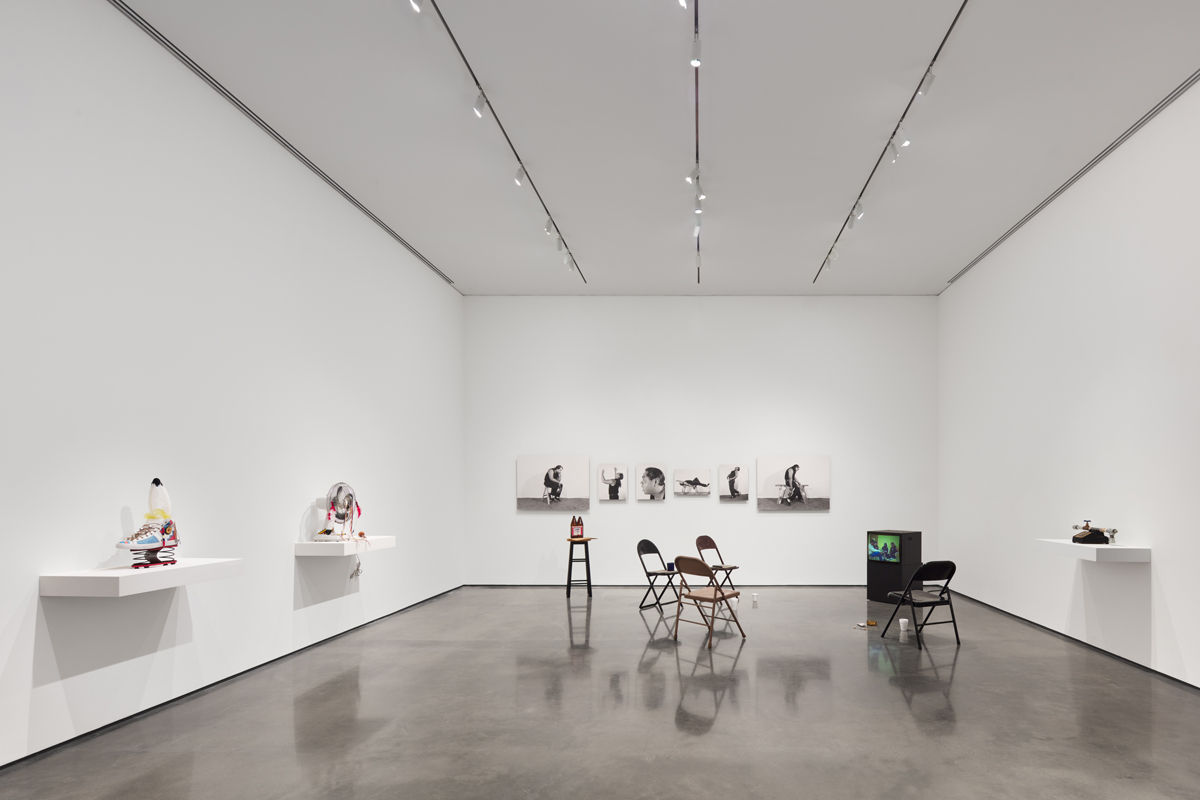
Indian Theater: Native Performance, Art, and Self-Determination since 1969, installation view. Courtesy Hessel Museum of Art, Bard College. Photo: Olympia Shannon. Pictured, far left: James Luna (Payómkawichum, Ipai, and Mexican), War Dance Technology (Left), 1990. Acrylic on sneaker with found objects.
Indian Theater: Native Performance, Art, and Self-Determination since 1969, curated by Candice Hopkins, with curatorial research led by Amelia Russo, Hessel Museum of Art, Bard College, Annandale-on-Hudson, New York, through November 26, 2023
• • •
In 1969, the Institute of American Indian Arts published Indian Theatre: An Artistic Experiment in Progress, a bulletin-manifesto created by IAIA director Lloyd Kiva New and drama and dance instructor Rolland Meinholtz, which presented certain Indigenous principles and practices as guidelines for the development of a multivocal Indian vanguard. In traditions—conceived before white supremacy oppressed and malformed the imagination—there is possible futurity, and models of resistance. With this proposal, curator Candice Hopkins begins the exhilarating and essential Indian Theater: Native Performance, Art, and Self-Determination since 1969, a touchstone survey of Native American, First Nations, Métis, Inuit, and Alaska Native contemporary artists whose practices, deliberately and otherwise, deploy performance and the performative—theater and the theatrical—to create critical, political works of art.
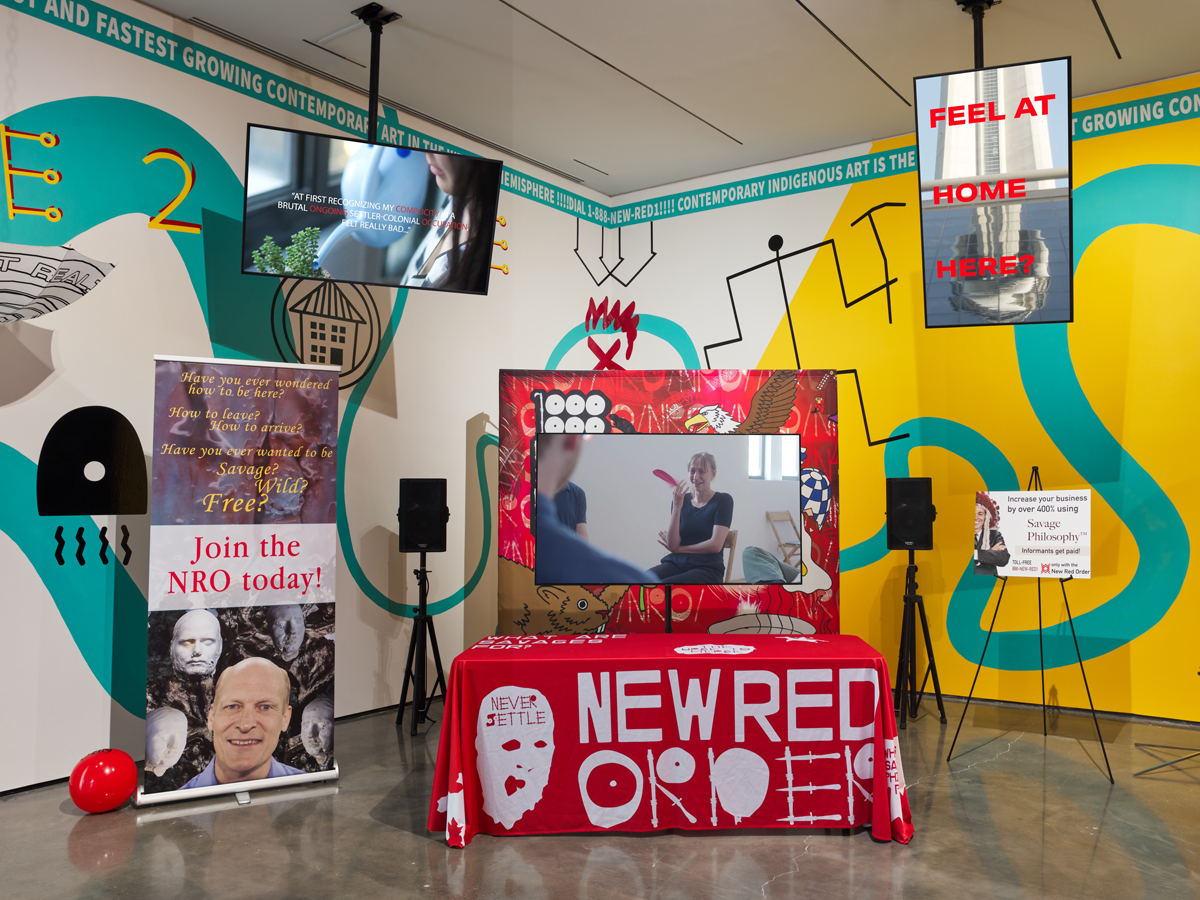
Indian Theater: Native Performance, Art, and Self-Determination since 1969, installation view. Courtesy Hessel Museum of Art, Bard College. Photo: Olympia Shannon. Pictured: New Red Order, Conscientious Conscripture, 2018–ongoing. Step and repeat, feather flag, retractable banner, foam board print, tablecloth, HD videos, rotary phone.
1969 was also the year that the group who called themselves the Indians of All Tribes began the Occupation of Alcatraz, launching a new wave of Native activists resolved to free themselves from the whim and mercy of the nation that built itself upon their decimation. In 1975, Congress passed the Indian Self-Determination and Education Assistance Act, which acknowledged the autonomy of certain tribes and allowed them a greater degree of authority over how they administered federal funds. Indian Theater presents forty-two artists and collectives working from these robust roots across live performances, videos, paintings, sculptures, sound recordings, ephemera, and installations to present a continuously flourishing lineage—perhaps even call it a birthright—of artistic self-possession and resistance.
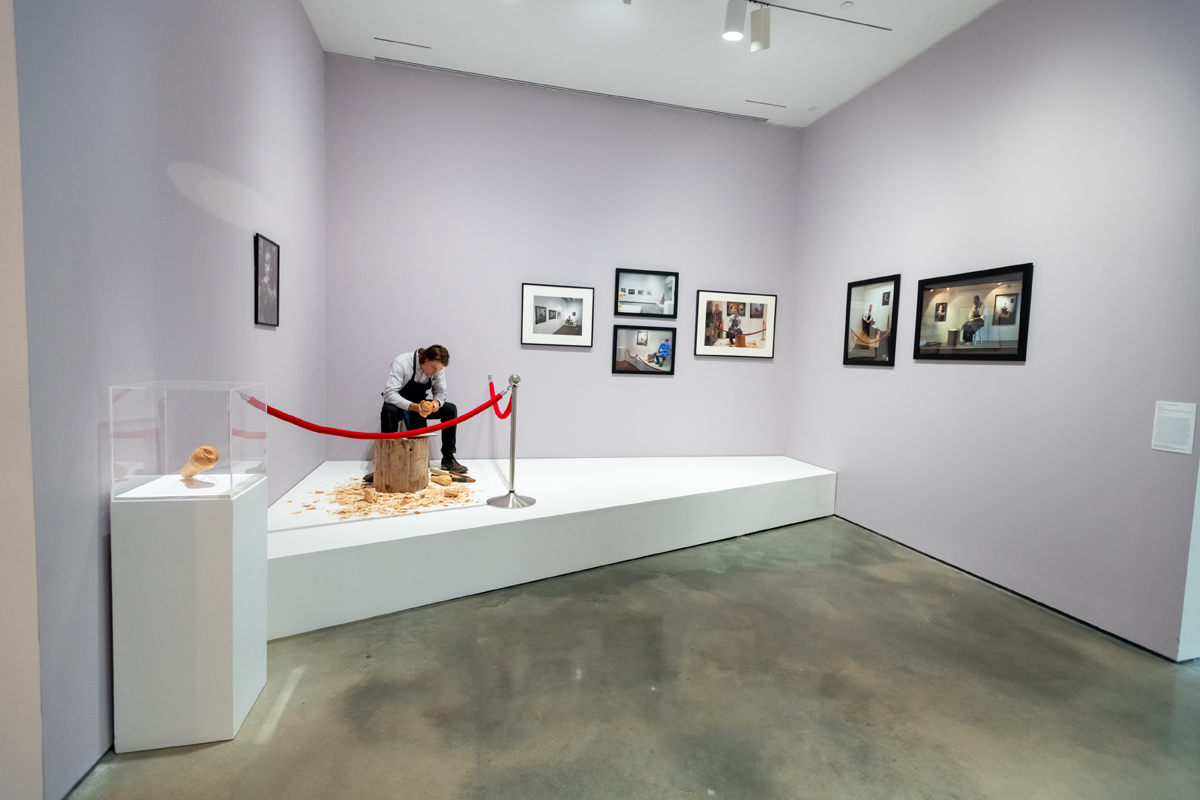
Indian Theater: Native Performance, Art, and Self-Determination since 1969, installation view. Courtesy Hessel Museum of Art, Bard College. Photo: Karl Rabe. Pictured, center left: Nicholas Galanin (Lingít and Unangax̂), White Carver, 2012–ongoing. Installation and performance with sketchbook, tools, carving apron, carved blanks, chopping block, woodchips, framed photos of past carvers.
Performance always involves the question of “role playing,” and a documentary on view about the mighty Spiderwoman Theater, formed in New York City in 1976, captures the all-female company onstage and off. Scenes from their production Lysistrata Numbah! (1977) are punctuated by candid interviews on the subjects of marriage, motherhood, artistry, and abortion. Muriel Miguel, Spiderwoman’s founding force, explains the complex ramifications of abortion for Native women: “I think it’s a choice of each woman, and it’s not a choice of a man, for instance, in the Indian Movement to say, ‘but that’s genocide and you should not do it, because you’re killing Indian people and we need Indian people in this world.’ That’s true. But not if it’s at the cost of a woman’s life, of her happiness. The child’s happiness too.”
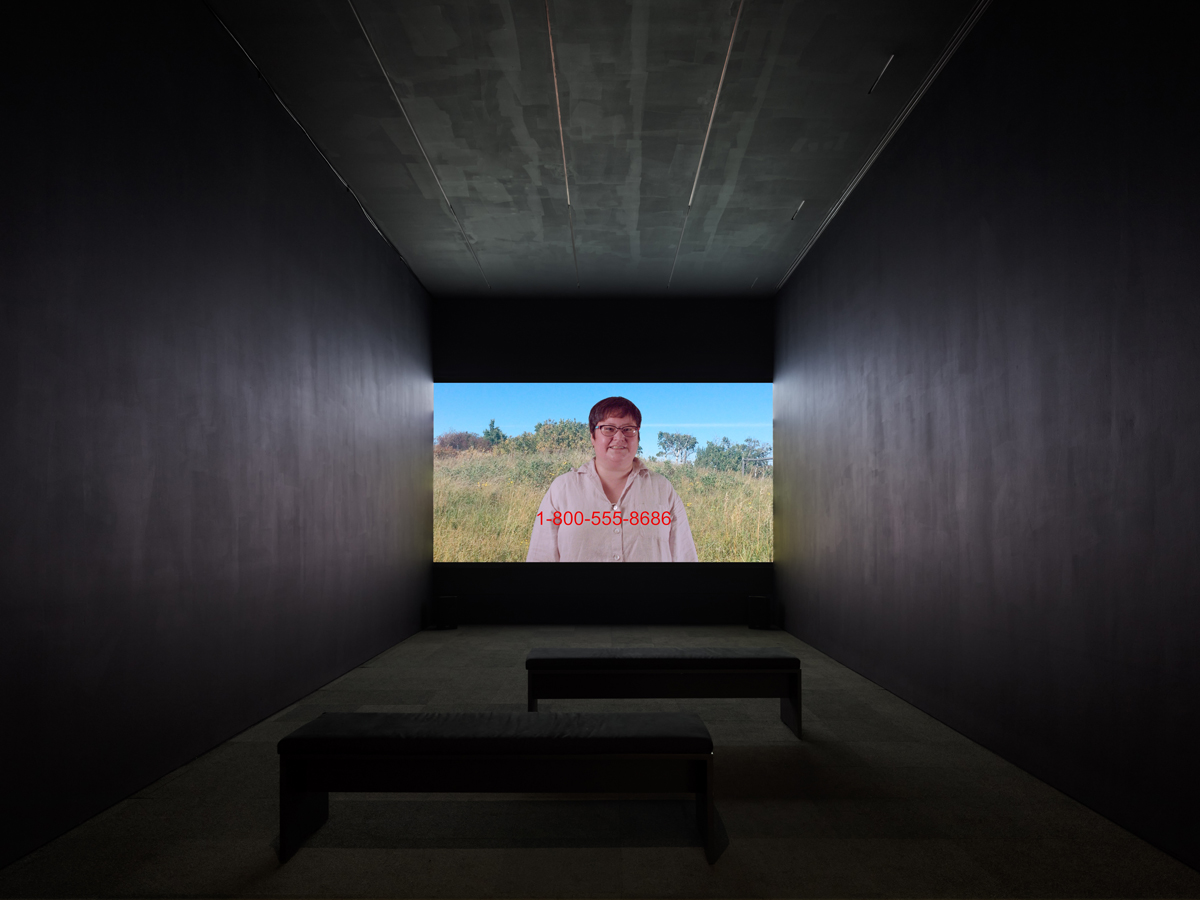
Indian Theater: Native Performance, Art, and Self-Determination since 1969, installation view. Courtesy Hessel Museum of Art, Bard College. Photo: Olympia Shannon. Pictured: Theo Jean Cuthand (Plains Cree, Scottish, Irish), 2 Spirit Introductory Special $19.99, 2015.
To memorialize the forgotten and erased contributions of Native women to the Indian resistance movement, Ruth Cuthand created her Ghost Dance series, of which two vibrant, hypnotic paintings from the mid-1980s depicting Native dresses are on view. In another room of the exhibition, her son, Theo Jean Cuthand, advocates for others who’ve been forgotten and erased. His very funny video, 2 Spirit Introductory Special $19.99 (2015), is a satirical infomercial for an advice hotline for First Nations queers who find themselves without support or guidance from their elders and ancestors. “Want to talk to someone in the spirit and the flesh instead of reading The Spirit and the Flesh,” Cuthand slyly pitches to the camera, holding up a copy of Walter Williams’s classic 1986 history of the “sexual diversity” within Indigenous tribes. Recovering suppressed desire is the focus of Rosalie Favell’s Pillow Box Suite (1999), three light boxes featuring stills taken from the television show Xena: Warrior Princess (1995–2001), particularly popular among the sapphic set, of women touching each other’s bodies—foregrounding the sexual chemistry once relegated to subtext.
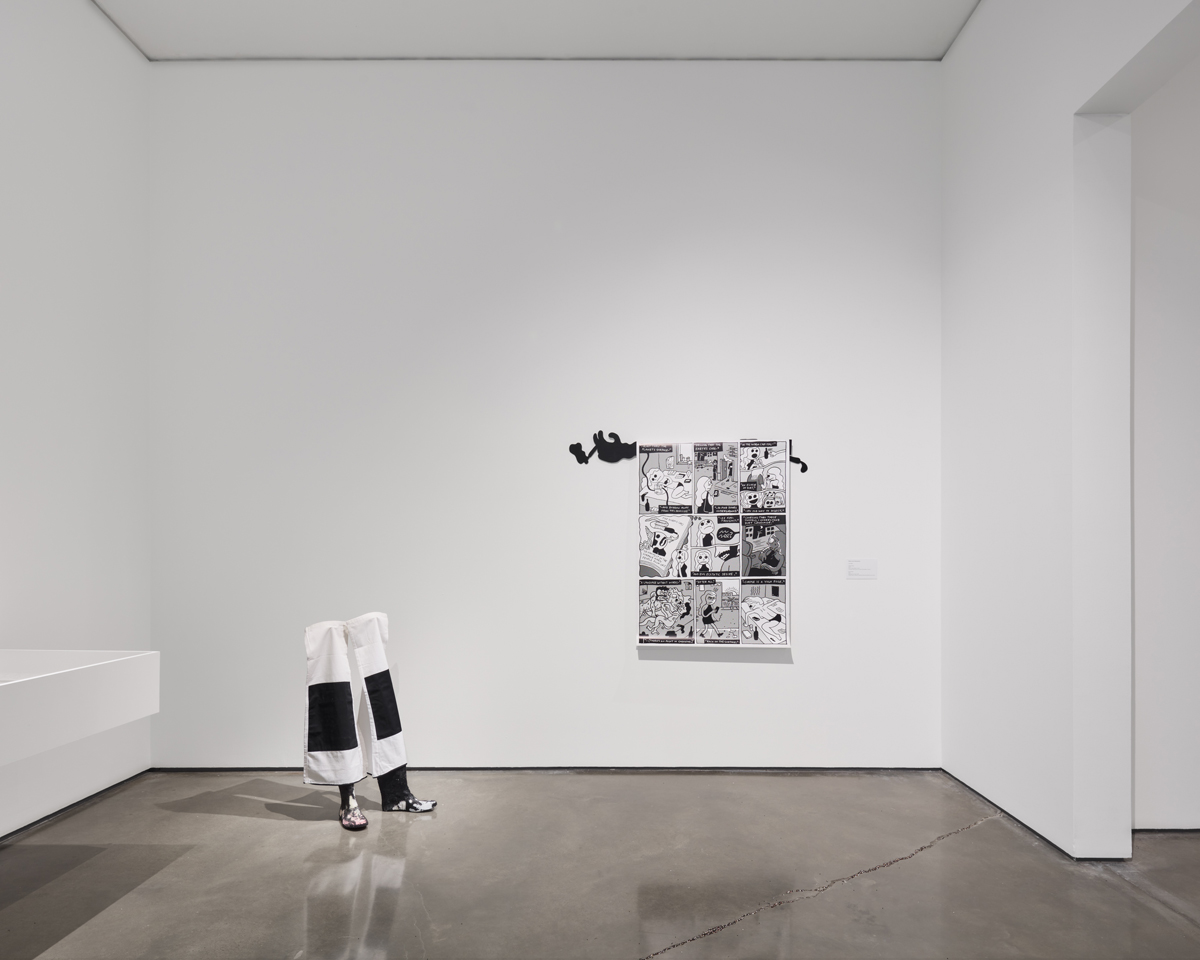
Indian Theater: Native Performance, Art, and Self-Determination since 1969, installation view. Courtesy Hessel Museum of Art, Bard College. Photo: Olympia Shannon. Pictured, left to right: Walter Scott (Kahnawá:ke), Piranah Pants, 2019; Walter Scott (Kahnawá:ke), Dirt Chapter, 2015.
For Kite, Native tradition seems to be offered as a kind of counterbalance to technology’s death drive. Her mysterious, disquieting video L-Sys (Lakota System) [Projection from Listener] (2018) is propelled by a soundscape interweaving feed from a police scanner with ominous music, and a glitchy text in which phrases like “dream you hear it” are incanted again and again over animated shapes, based on those created and traditionally used by Lakota woman, that here bloom and fall, framed at the center of the screen as through a telescope. If for Kite language—both words and symbols—is the communicating vessel, other artists deploy objects as supple, porous containers of human life and its traces: two sculptures by Jeneen Frei Njoontli comprise tarps molded to suggest what might be hiding beneath them; three by Walter Scott conjure absent bodies.

Indian Theater: Native Performance, Art, and Self-Determination since 1969, installation view. Courtesy Hessel Museum of Art, Bard College. Photo: Olympia Shannon. Pictured, far right: Kent Monkman (Cree member of Fisher River Cree Nation in Treaty 5 Territory [Manitoba]), Louis Vuitton Quiver, 2007.
Then there are artworks that address how Native culture sometimes resists, other times acquiesces to, capitalism’s allure. Kent Monkman’s fabulous Louis Vuitton Quiver (2007) is the perfect luxury brand accessory for hunters who want to keep their arrows sharp while looking chic. James Luna’s War Dance Technology (Left) (1990)—a sneaker mounted on springs and bedecked with feathers, bells, and beads—is ingeniously handmade, if nowhere near couture. In one of the show’s funniest examples of role reversal, Nicholas Galanin tasks the performer of White Carver (2012–ongoing) to sit in a gallery, on display for visitors to see, and whittle wood into the shape of a sex toy designed for cis-male pleasure. (The joke writes itself.) The most complicated punchline regarding purchase power belongs to Jackson Polys, Adam Khalil, and Zack Khalil of New Red Order, whose clamorous installation Conscientious Conscripture (2018–ongoing) looks like a sales booth at a New Age Expo. Their product: a system by which folks can overcome the limitations imposed by our “globalized, capitalist, settler colonial society.” Their tagline: “Never settle!” And if you need proof that you’re a clear-eyed rider of the changing tides, there’s plenty of merch for you to buy.

Cannupa Hanska Luger (Mandan, Hidatsa, Arikara, Lakota), drone video still from Mirror Shield Project, 2016. Mirror shields and drone video. Photo: Rory Wakemup.
As Indian Theater affirms, resistance, like performance, is a time-based art form, one that must shift and unfold in response to the shifting, unfolding world. Cannupa Hanska Luger began his Mirror Shield Project in 2016 in support of the activists at the Oceti Sakowin Camp protecting the water at Standing Rock, North Dakota. Luger, as the title suggests, built mirrored shields for the activists to hold up to the police and members of the Dakota Access Pipeline, so the aggressors would see themselves, their own actions, instead of their targets. In the video on view, the assembled activist-performers line up and walk to create the shape of the water serpent believed to ward off the oil pipelines, holding their shields overhead, toward the camera hovering above them. The sight is brilliant—a moving, gleaming symbol of self-defense—its reflection invoking the viewer, inviting us to reflect in our turn on the various roles we may choose to play in all of this.
Jennifer Krasinski is a writer and critic, and frequent contributor to Artforum, Bookforum, and more.